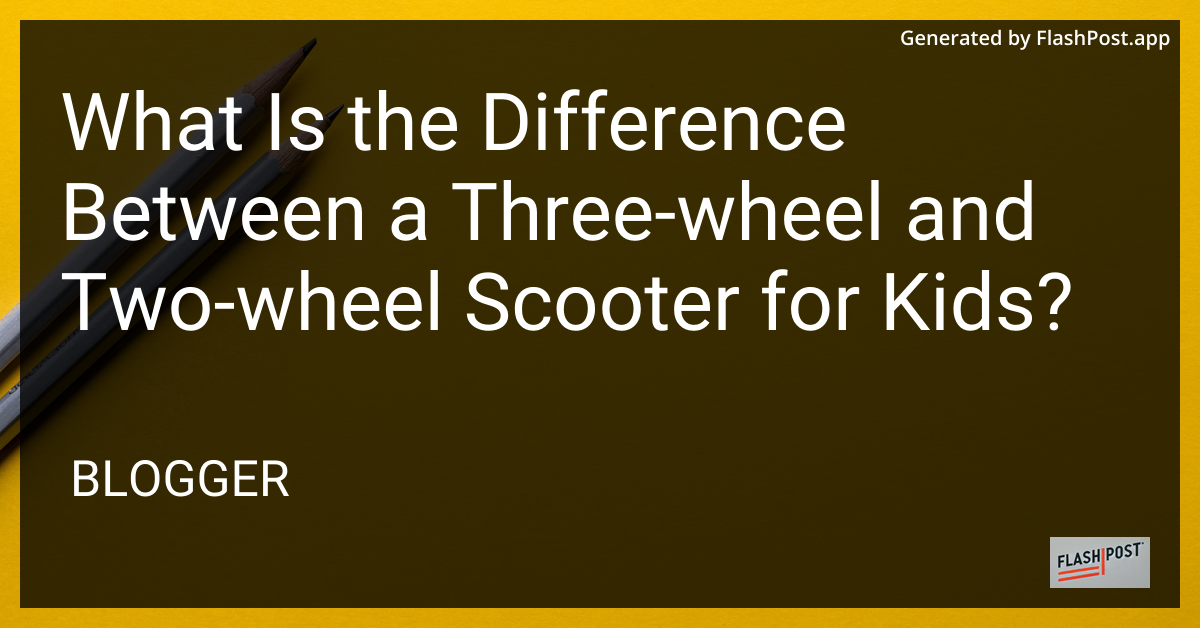What Is the Difference Between a Three-wheel and Two-wheel Scooter for Kids?

What is the Difference Between a Three-Wheel and Two-Wheel Scooter for Kids?
Scooters are a thrilling way for children to enjoy the great outdoors while enhancing their balance and coordination skills. When it comes to scooters for kids, parents often find themselves choosing between two primary types: three-wheel and two-wheel scooters. In this article, we’ll break down the key differences between these scooters to help you make an informed decision for your child’s next outdoor adventure.
Understanding the Basics
Three-Wheel Scooters
Three-wheel scooters are designed with younger kids in mind, typically recommended for children aged 3 to 5 years. These scooters have two wheels at the front and one at the back, offering enhanced stability and support.
Features:
- Stability: The dual front wheels provide excellent balance, making it easier for young beginner riders who are still developing motor skills.
- Steering Mechanism: Often use a lean-to-steer mechanism which encourages turning by leaning the body rather than twisting the handles.
- Safety: Generally considered safer for younger children as they are less likely to tip over.
Two-Wheel Scooters
Two-wheel scooters are better suited for older children who have mastered the basics of balancing and riding a scooter. These are typically recommended for kids aged 5 years and above.
Features:
- Agility: Two wheels offer greater maneuverability, allowing sharper turns and quicker responses.
- Speed: Generally allow for faster speeds which might appeal more to older kids seeking an adrenaline rush.
- Skill Development: Riding a two-wheel scooter challenges children to improve their balance and coordination.
Benefits and Drawbacks
Three-Wheel Scooters
Benefits: - Provides greater stability. - Ideal for toddlers and younger children. - Encourages initial balance and coordination skills.
Drawbacks: - Limited speed. - Less agile than two-wheelers.
Two-Wheel Scooters
Benefits: - Encourages development of advanced balance and coordination. - More agile and faster.
Drawbacks: - Less stable, which may lead to more falls. - Requires existing riding skills to prevent accidents.
Choosing the Right Scooter
When selecting the appropriate scooter for your child, consider their age, skill level, and what you hope to achieve—be it developing their motor skills or just providing an enjoyable outdoor activity. Moreover, ensuring best safety equipment for electric scooters is key to a safe experience.
Conclusion
Both three-wheel and two-wheel scooters offer distinct benefits tailored to different age groups and skill levels. While three-wheel scooters are excellent for younger children just starting, two-wheel scooters cater to the needs of older and more experienced riders.
Parents may want to explore options like the top electric scooters under 1000 for older kids or consider learning how to maintain scooters effectively with resources on garden scooter upkeep. Equipping your child with the right scooter and safety gear will pave the way for safe and fun outdoor adventures.
Comments
Post a Comment